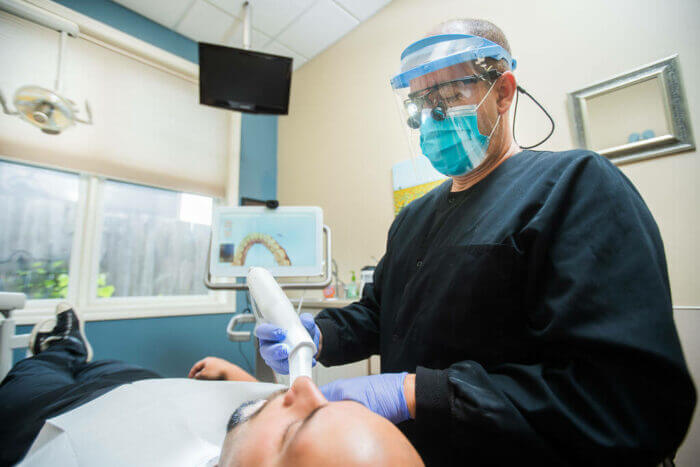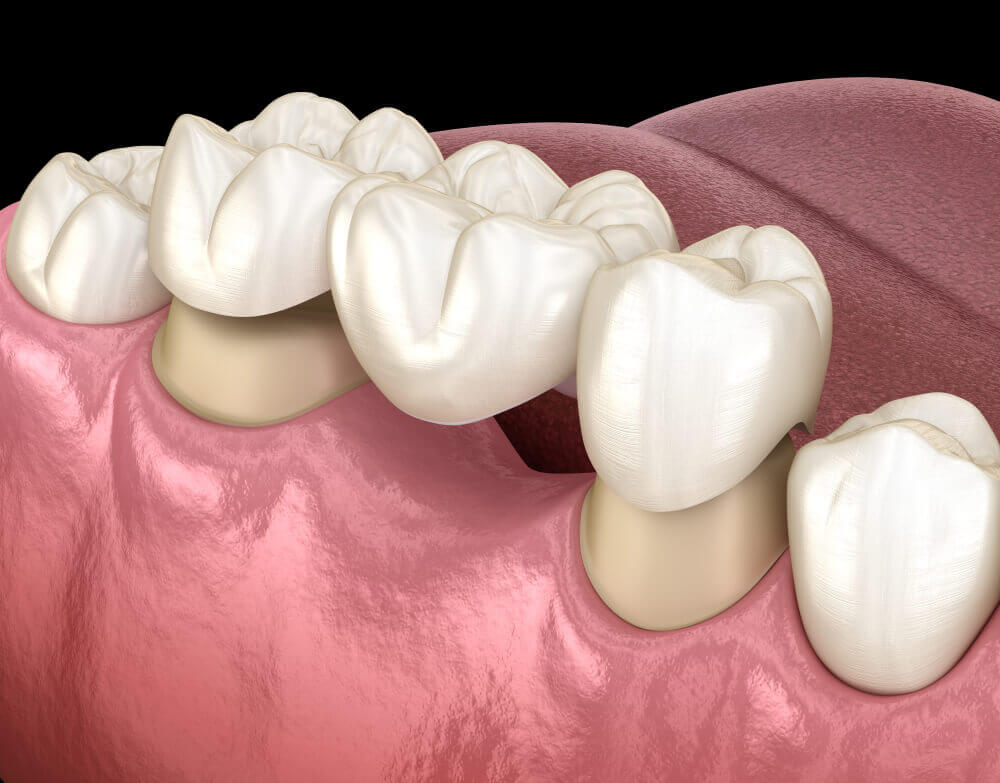
Fillings
What is a filling? In order to understand what a filling is, it’s important to understand why we might need one.
Bacteria, or germs, lives in everyone’s mouth. In order to survive in the mouth, bacteria take sugars from our food and create a glue that sticks to the teeth. This glue is called plague. Once stuck to the tooth, bacteria picks up other food particles and eats them. The waste product of the bacteria is acid. When allowed to stay on the teeth for long periods of time, the acids break down the tooth and create a hole. This hole is called a cavity. The broken down tooth structure in the cavity is called decay.
To repair a tooth with a cavity and decay, we gently remove the damaged tooth structure and place a “filling” in its place.
Crowns (Caps)
Crowns: think of a crown as a cover for your tooth. Whereas a filling replaces decayed tooth by filling a hole in your tooth, a crown wraps around your tooth and gives it support to prevent the tooth from cracking or splitting.
Why do I need a crown?
- More than half of the tooth is filling and the tooth is susceptible to cracking.
- The tooth has already developed a crack and is sensitive to temperature and chewing.
- The tooth had a root canal and is weak. The crown will help prevent tooth from cracking.
Now that I’ve had a crown, can I still have problems with this tooth? Yes. Why?
- The fact that the tooth needed a crown means that it was already in a weakened state. The nerve can die and a root canal may be needed.
- Cracked teeth can be very tricky. Even with a crown supporting the tooth, the crack may be too severe, sometimes even requiring an extraction.
- Even though the crown material is manmade, you still have a tooth under there. If not properly cared for, that remaining tooth structure can decay, requiring a new crown, or in severe cases, extraction.
Alternatives to a crown?
- Just a bigger filling. Sometimes they work. Sometimes they don’t. When they work, everything is great. When they fail, its usual catastrophic, and an extraction is needed.
- Onlay: similar to a crown, just conserves tooth structure. We try to do these whenever its possible.
Should I get a crown? Every case is unique. That’s what were here for. We will give you all your options and help you determine what will be best for you.
Bridges

Permanent might be a bit misleading. Permanent only refers to the fact that these bridges are not removable. Once cemented, they are treated like the rest of your teeth. A permanent bridge does require special care. In its simplest terms, a bridge replaces a missing tooth by crowning the adjacent teeth and soldering or milling a fake tooth between them. The bridge gets cemented and you have a pretty easy fix to your missing tooth.
Benefits to permanent bridges:
- Relatively quick fix when compared to an implant. Start to finish, depending on the amount of teeth included, a permanent bridge can take three to nine weeks on average.
- Non surgical
- While waiting for the permanent bridge, you have a temporary one in place.
Drawbacks to a permanent bridge:
- You must prepare the adjacent teeth for crowns. If these teeth are not in need of crowns, that can be a difficult decision.
- If anything happens to an adjacent tooth, the whole bridge needs to be re-done, or another option must be considered.
